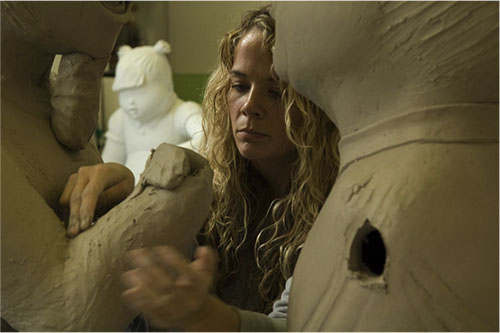Andréa Keys Connell, one of the six finalists for the 1858 Prize for Contemporary Southern Art, graduated with a BFA from Maryland Institute College of Art in Baltimore in 2002 and went on to earn an MFA from Ohio University in Athens in 2009. She currently lives and works in Richmond, Virginia, where she is Clay Area Head and Assistant Professor in the Department of Craft and Material Studies at Virginia Commonwealth University. Connell produces monumental works in clay, which grapple with the complex ideas of human defenselessness, expressed through distorted, elongated, and fragmented bodies, many of which appear to be melting. These deeply moving installations suggest the unavoidable vulnerability of mankind.
What is your creative process?
That is such a big question because I do not think that my life is separate from my process. I am constantly observing, gathering, processing.. repeat… There is not much that enters my life that does not filter in some way into my analytical process. As for my physical making process… I had my “coming to clay” moment when I was a junior in college. Prior to that, I was focusing primarily on painting and photography. When I found clay, a connection between my brain, heart, and hands clicked on, and I never left the clay studio. When I think about it now it makes a lot of sense. My mother collected Majolica , Zsnolnay, and Herend and when I was little, I would play with the Zsolnay and Herend figurines as though they were dolls. When she would catch me playing with them she would take them and place them back on their shelves reminding me of their preciousness. Their “preciousness” only made them more valuable to me and the narratives that I would impose on them. I think I am also just more of a 3D thinker when it comes to making. It was such a relief to me when I found clay — to be able to discover a form through the ability to touch it in the round. It is such a physical relationship, and when making life size or larger figures, I find myself hugging and pressing up against, pushing and pulling on the clay — and all of this contact is imprinted on the surface of the clay…it’s a pretty delicious way of making…I build my pieces hollow, moving between coils, slabs, and pinching. Building hollow provides me with the ability to form my figures by pressing from the inside. This feels very natural to me in thinking about the body — the skin/clay is shaped by what is beneath it. In this case, it is the internal pressure that I am using to shape the skin — I find an endless supply of metaphors in this way of making and representing the figure.
From where do you draw inspiration for your work?
I have my go to sources that I am always pulling imagery and content from such as newspapers, photojournalism, monuments, figurines, statuary, fables, battlefields, graveyards, Romanticism, wind… and then there are the things that inspire me unexpectedly — those are usually the most powerful points of inspiration, when something just comes to me, changes me, makes me see something in new way. This is usually inspired by a specific space, a sound, a book, news, birth, death. I am fascinated by people and by how our life experiences shape who we become, and I believe that the body reveals far more than the mind wants it to — for this reason, I have a terrible habit of observing faces and bodies very closely and I draw great inspiration from watching the way someone moves their mouth when they talk or are on the verge of speaking. I love hands and feet, and their ability to tell a different story than the mouth. I love wrinkles and sags and bags, fingernails, toenails, and earlobes… all of the parts of the body that have the ability to speak volumes about an individual’s history.
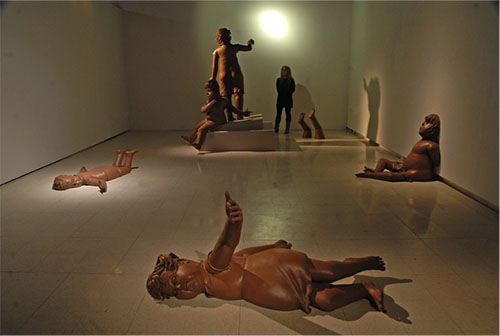
Who are your artistic influences?
I find endless inspiration in Delacroix and Gérricault paintings — particularly The Barque of Danté and The Raft of the Medusa, and I have an endless list of artist whom I admire. I can however, name the three pieces of art that have moved me on a profound level, and whom I am deeply grateful for- The first is a painting by William-Adolphe Bouguereau, Girl With Broken Pitcher, 1891. This painting is located in the Fine Arts Museum of San Francisco. I came across it when I was 16 and I found myself completely enraptured by the mysterious story behind the girl’s gaze. I recognized something in myself in this girl and it was the first piece of art to move me to tears. The second is James Turrell’s Into the Light. I stood in the room with this floating square of light for a long time, trying very hard to understand how it existed. When I convinced myself that it was somehow projected onto the wall, another viewer moved her hand through the square. It is hard to describe this throttling shift of perspective, but it was so profound that my knees buckled. Come to think of it, I had a similar experience when I realized the poetics of Felix Gonzalez-Toress work. The third piece is a more recent piece that I believe to be one of the most achingly strong pieces I have seen in a very long time, Heather Cassil’s Becoming an Image. There are so many levels of conversation that lie within this piece that it actually renders me speechless.
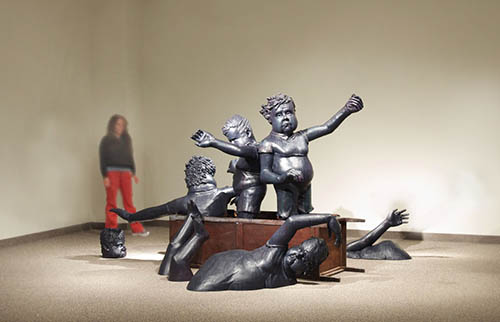
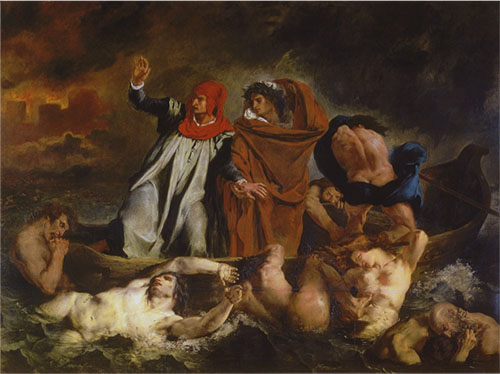
Do you have a favorite of the work that you have produced? If so, please describe it.
I am very excited by the public art commission that I just completed for the Cleveland Public Library, Migration. The potential in public art is a very interesting challenge that I would love to continue to engage. Through this project and a previous commission, I have been able to work in a scale that never seemed possible before. I can see a space where I can truly challenge the notion of the monumental/monument.
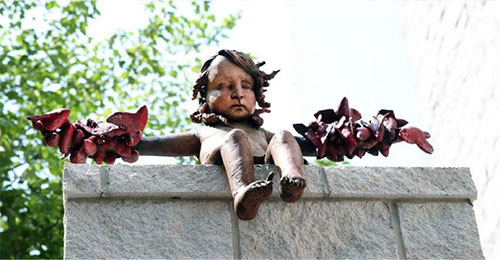
How did you find out about the 1858 Prize?
I have followed this prize over the last three years and am deeply honored to be amongst the finalists.
Read more about Andréa Keys Connell’s work here and on her website.
1858 Prize for Contemporary Southern Art Unveiling Party
Thursday, September 17, 6pm
$25 Society 1858 Members, $35 Non-Members
Location: The Drawing Room at The Vendue, 19 Vendue Range
1858 Prize Dinner
Thursday, September 17, 7:30pm
$100 Society 1858 Members, $135 Non-Members
Location: The Gallery at The Vendue, 26 Vendue Range
For more information or to purchase tickets, please visit gibbesmuseum.org/events
—India Dial, Marketing Intern, 2015
Published August 3, 2015


